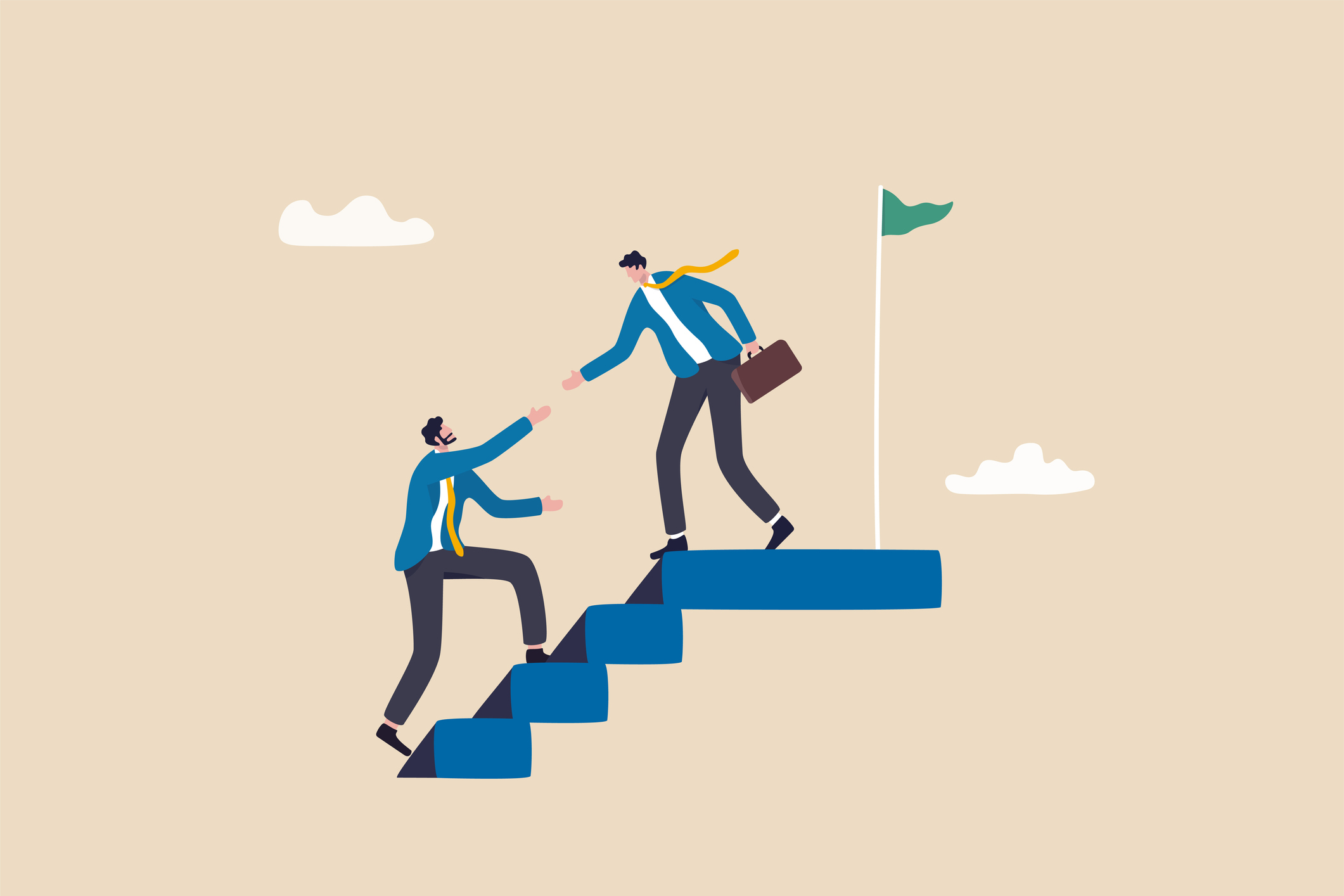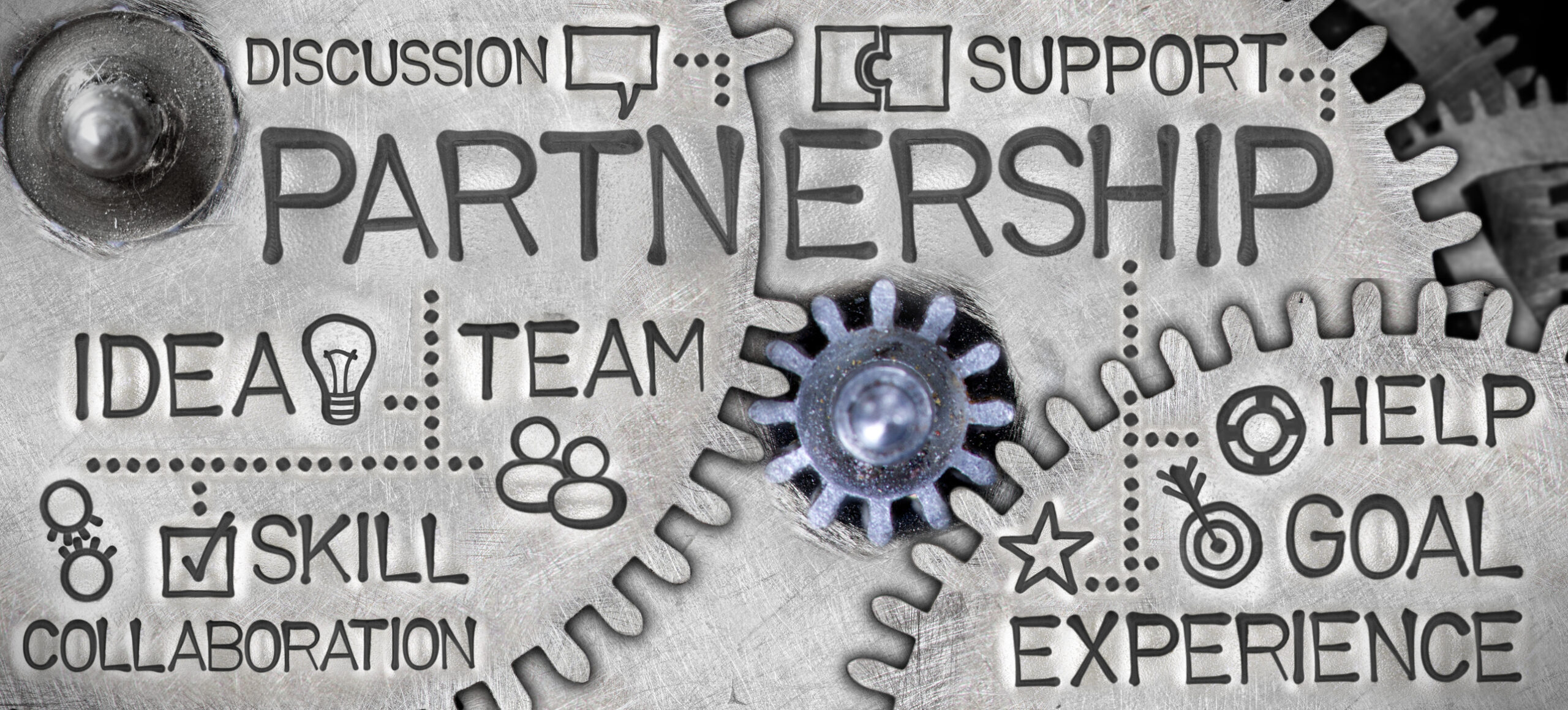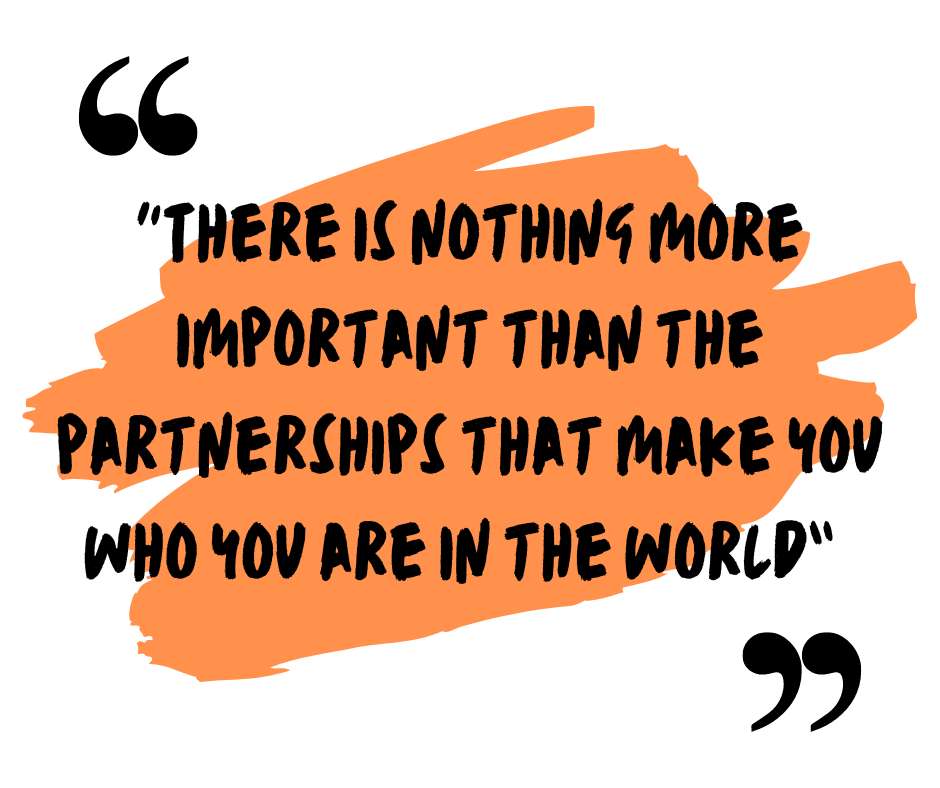
Partnerships are ubiquitous in our lives, yet we often take them for granted rather than interrogating them to discover how to make them richer, more effective, and ultimately more meaningful. They affect our personal lives as we engage with family and romantic partners; our professional lives as we work with colleagues, customers, and vendors; and often blur the lines between work and home life.
Take a moment to think about your own life. What are the partnerships that enrich your life experiences? Can you think of a few examples from your personal life? How about some from the workplace? Are those partnerships effective? What are you able to achieve in collaborating with others that you may not have been able to accomplish on your own? What can you do to enhance and grow the partnerships in your life? All of these questions come to the fore in Jean Oelwang’s recent book Partnering: Forge the Deep Connections that Make Great Things Happen.
Oelwang draws on years of experience working with partnerships big and small and reflects on the commonalities of those most successful ones – whether focused romantic partnerships like Jimmy and Rosalyn Carter, or Rev Desmond Tutu and Nelson Mandela and their respective wives. He also looks to well-known business partnerships like Ben and Jerry, the ice cream mavens, or research scientists who exposed the vanishing ozone layer and fought for years to restrict dangerous chemicals from release into the atmosphere. What do these successful partnerships have in common and what can we all learn from them?
Foundations of Partnerships: What is the Why?
At the most basic level, according to Oelwang, successful partnerships are based on a mutual shared understanding. Partners need to agree on a shared “why” for the partnership. Why are we doing this? What are our goals? What does success look like? “The number one thing that derails relationships is an inability to find shared meaning,” she explains (p. 8). Successful partnerships are also based on a commitment to something greater than yourself – a commitment to protecting our shared environment, or creating a company that treats its employees like partners and donates back to the community.
In education, partnerships might put students first and ask what policies and practices can we implement to help our most needy students, or focus on questions like, “how can we partner to ensure that teachers have the tools, resources, and strategies to be successful in their classrooms?” Whatever your guiding principles, the key result of partnerships is that you can achieve more and have a larger impact on your community, business, or enterprise when you are committed to something greater than yourself. In addition, Oelwang emphasizes the need to be “all in” – for all those partnering to not only have a shared vision of something to achieve, but that they are equally committed to seeing those goals realized. Asymmetrical commitment is a red flag that can doom successful partnerships.

The Ecosystem of Virtues in Successful Partnerships
According to the author “Deep Connections” also drive success in relationships. Whether personal or professional, these connections are marked by virtues like enduring trust, mutual respect, united belief, shared humility, nurturing generosity, and compassionate empathy – an “ecosystem of virtues” (p 74). Our purpose is achieved simply by being one-hundred percent there for our deep connections – “providing trust, respect, and belief in one another and helping each other reach out something bigger” (p. 35).

Partnering doesn’t shy away from the complexities of these relationships and it is not always easy to maintain the virtues. The book offers practical advice on navigating disagreements, emphasizing the need for positive amnesia and the power of asking, “What if the other person is right?”
“Magnetic moments” also emerge as a pivotal concept. Described as “intentional experiences that allow for people to be present together”, these moments “give space for spontaneity and wonder to flourish.” (p. 119). Whether it’s through play, where “you learn more about a person in an hour of play than in a year of conversation” (p. 120), or through open communication, these moments deepen our bonds. We can create opportunities for these special moments of connection buy providing time for interactions outside of the rigor of formal meetings and board room presentations. What are some “magnetic moments” you have experienced in your personal or professional life and how were they structured and facilitated? What is something you could do tomorrow to set the stage for more magnetic moments with your partners?
Take some time to think about the partnerships that are important in your life. What can you do to help facilitate those deep connections and magnetic moments and make sure that you and your partners share a common vision or “why” for how you work together, and find the common ground to achieve something greater than the sum of its parts. After all, “there is nothing more important than the partnerships that make you who you are in the world” (p. 211). So dig in, reflect, and engage to develop those relationships to achieve things that you could not do on your own.
Seeking more professional learning resources?
See what our team can do for you!
Dr. Aaron Willis is the Chief Learning Officer for Social Studies School Service. He works with districts around the country to provide resources, strategies, and training to help teachers make meaningful connections with their students. He can be reached via email at [email protected]. Follow him on Twitter @Dr_Aaron_Willis.

It is always important to remind yourself and reevaluate how you are caring for the partnerships in your life!